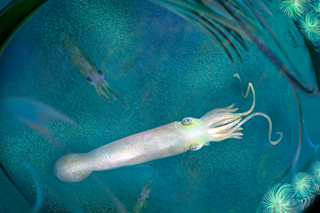Researchers at Yale University and the American Museum of Natural History have identified an ancient squid species fit for a president.
Originally discovered in central Montana, Syllipsimopodi bideni — named after U.S. President Joe Biden — is the earliest known relative of octopuses and vampire squid. The species lived 328 million years ago and is the only known vampyropod to have 10 functional arms (in addition to fins and rows of suckers to grasp prey). Biden had just been inaugurated at the time the study was submitted for publication, and researchers wanted to recognize his commitment to science, they say.
The S. bideni is just one of many species named after celebrities and other well-known people. Here are five other animal species named after celebrities.
Named after Colombian singer-songwriter Shakira, the Aleiodes shakirae is one of 24 new aleiodes wasps discovered in the Andes mountains in 2014. They are a ...















